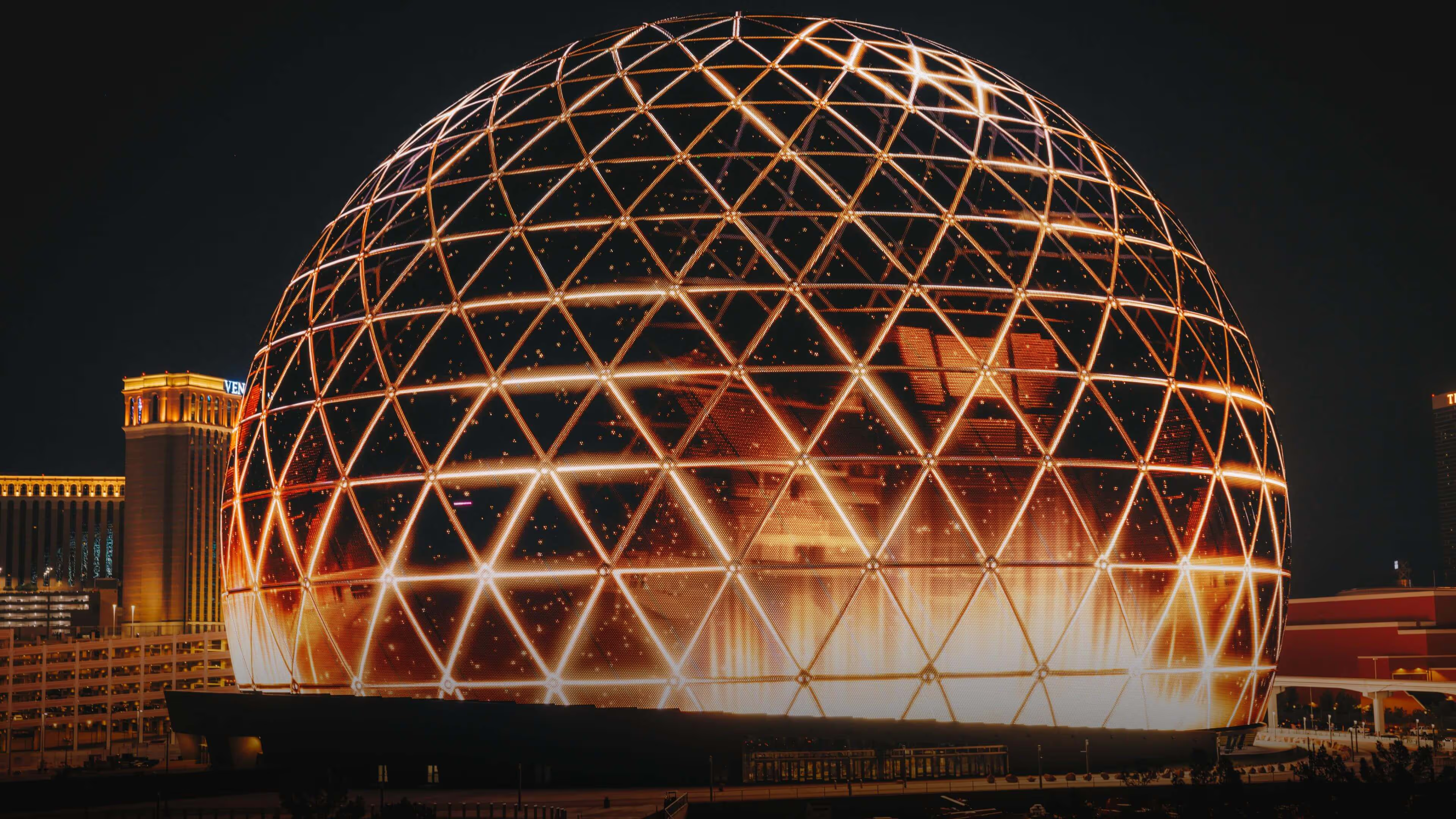
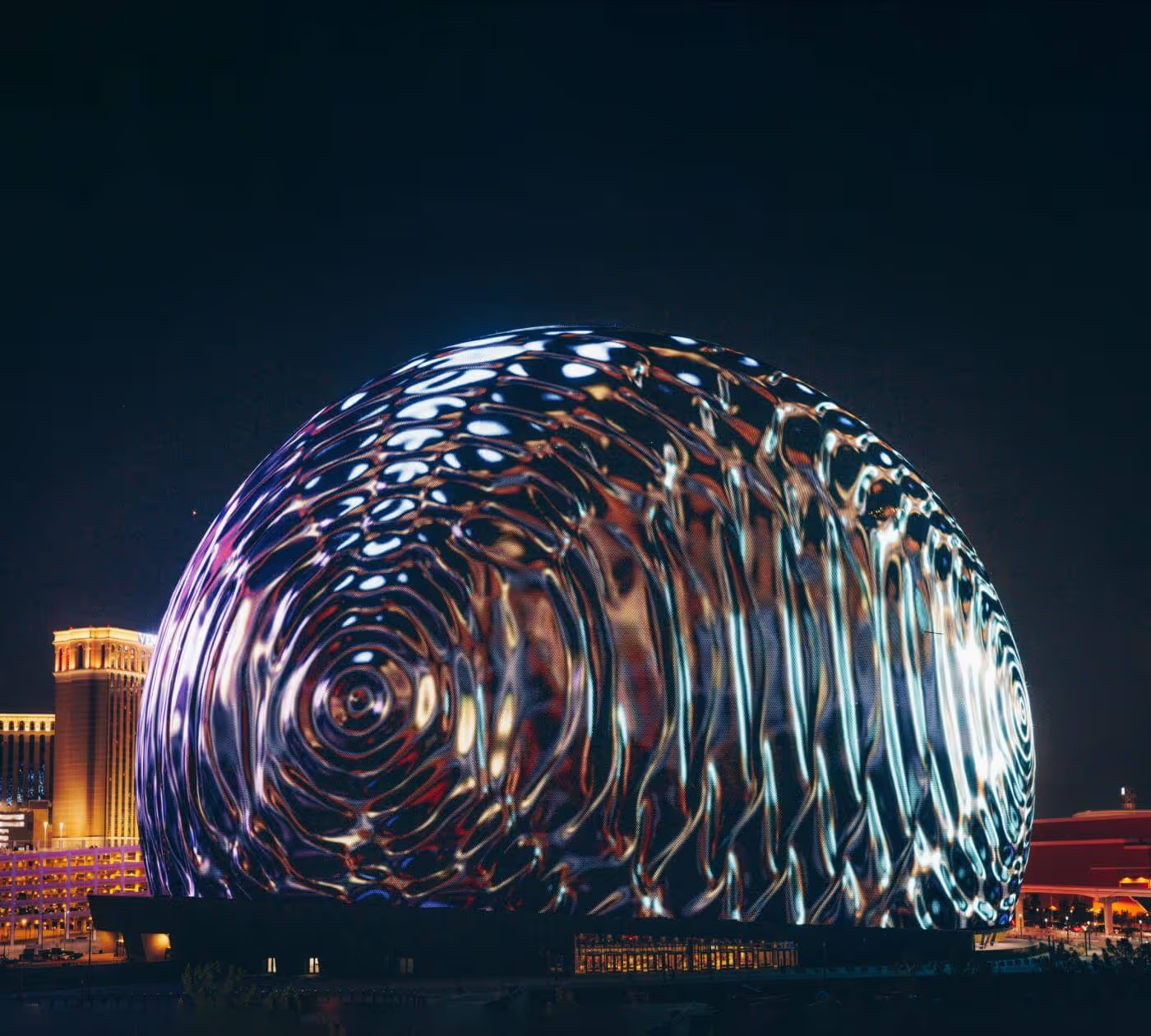
The grand vision for the most advanced concert venue on the planet, the Sphere in Las Vegas was to provide audiences with a next-generation live entertainment experience, including enveloping audio in headphone quality, that would match the extravagant visual aspect of the venue.
U2 opened this marvel of AV technology with Achtung Baby, a residency that quickly needed to be extended due to demand. Oscar-winning director Darren Aronofsky’s film Postcards from Earth put the immersive capabilities of the space to the test. Both shows have set the bar high for what audiences can expect to see at Sphere in the future.
The venue contains the world’s largest, fully integrated, yet invisible, concert-grade audio system developed by HOLOPLOT to deliver on this grand vision and was the natural choice by MSG Entertainment.
…but how exactly does it work?
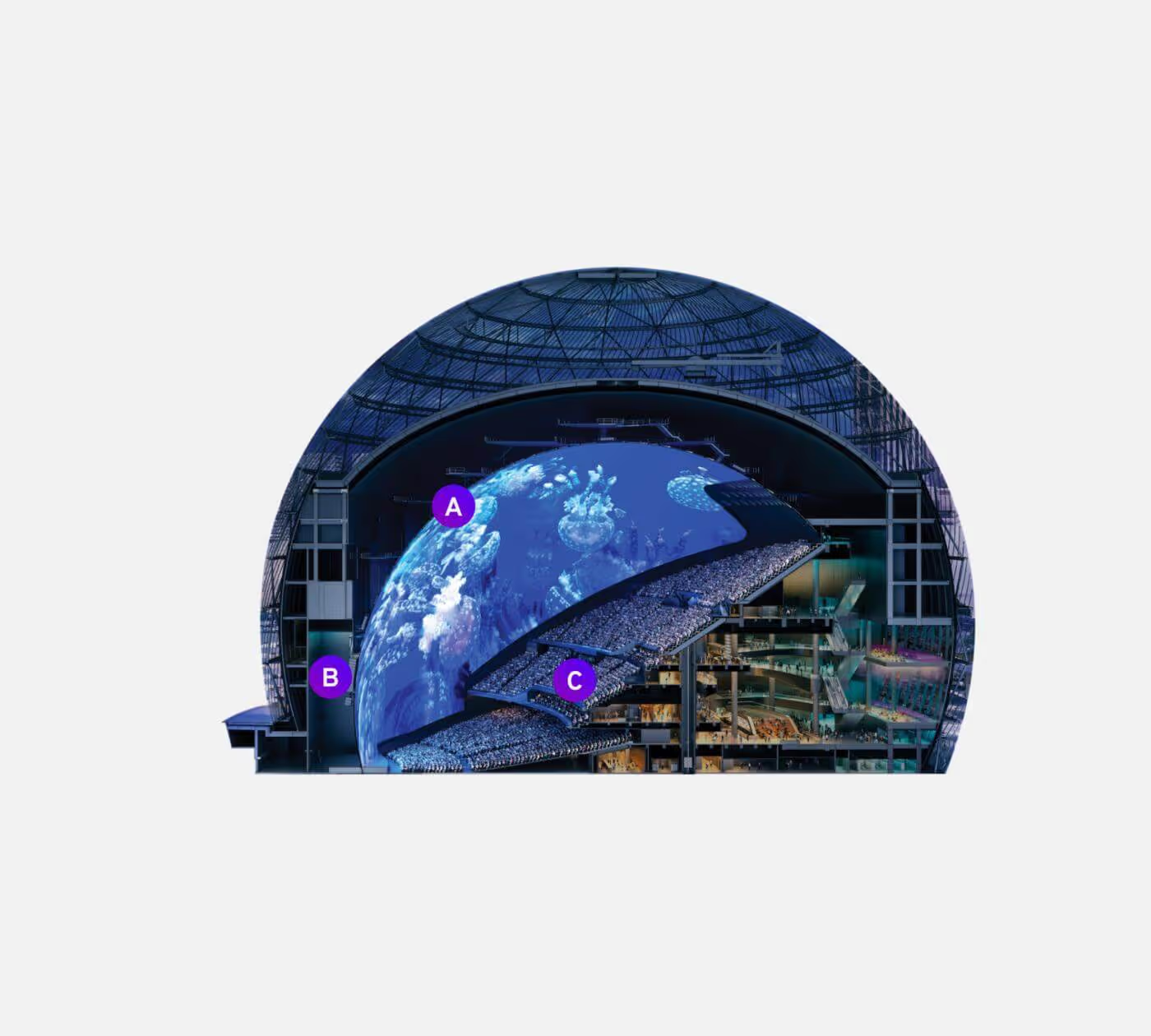
There were three key goals when it came to creating a next-generation experience inside the world’s most advanced live entertainment venue.
The best sounding venue in the world...in a spherical dome.
The entire audience should receive the same and best listening experience at every position, effectively making every seat the best seat in the house. All of this within a spherically shaped LED dome, probably the acoustically most challenging environment of any entertainment venue.
Fully immersive audio experience for all guests
In addition to exceptional quality stereo sound, the system had to provide a next-level immersive experience across the whole audience and ensure accurate sound localization in line with the visual screen content.
No speakers visible
To ensure unobstructed sightlines the entire system had to be hidden behind the LED screen, no delay speakers were allowed.
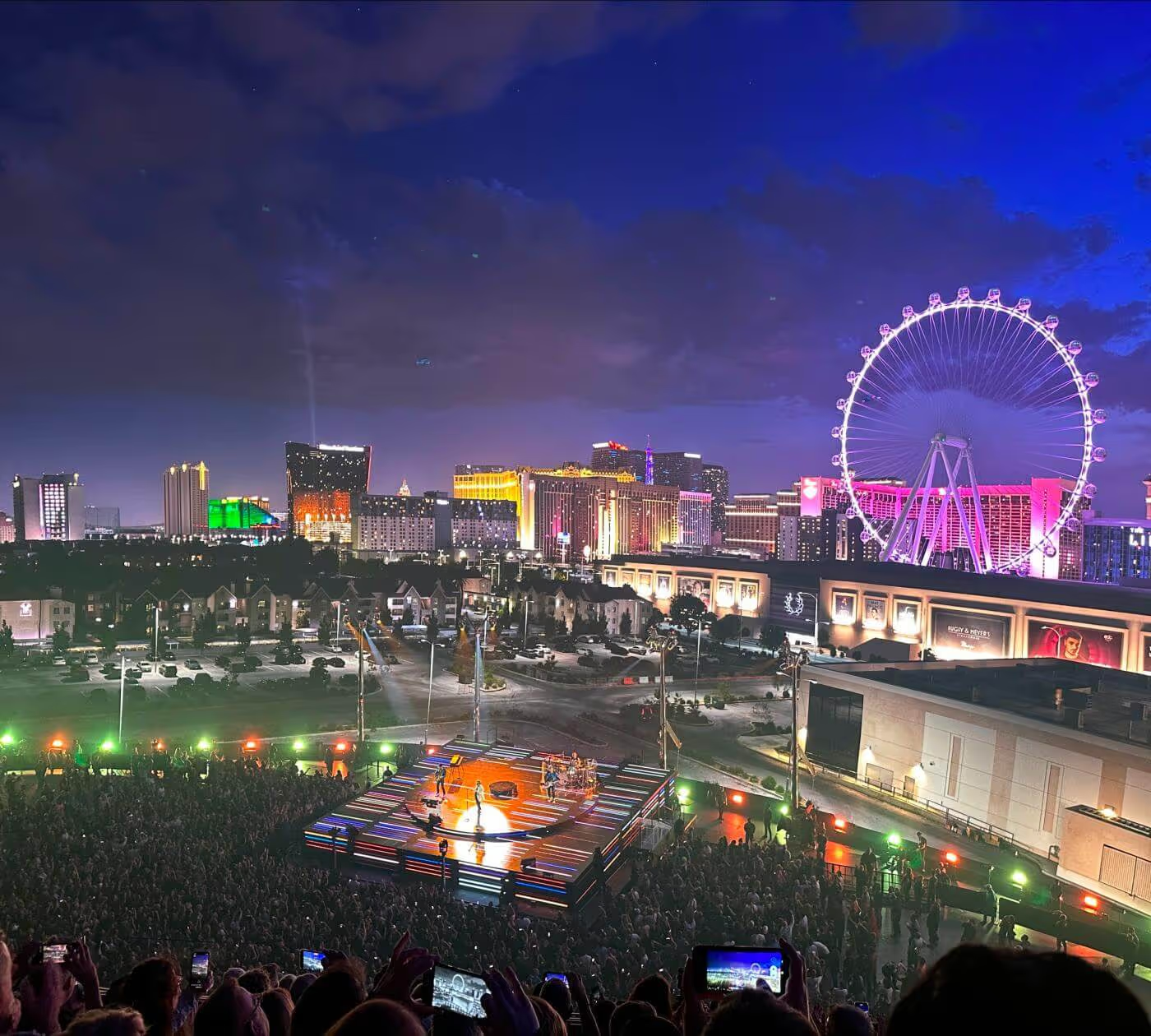
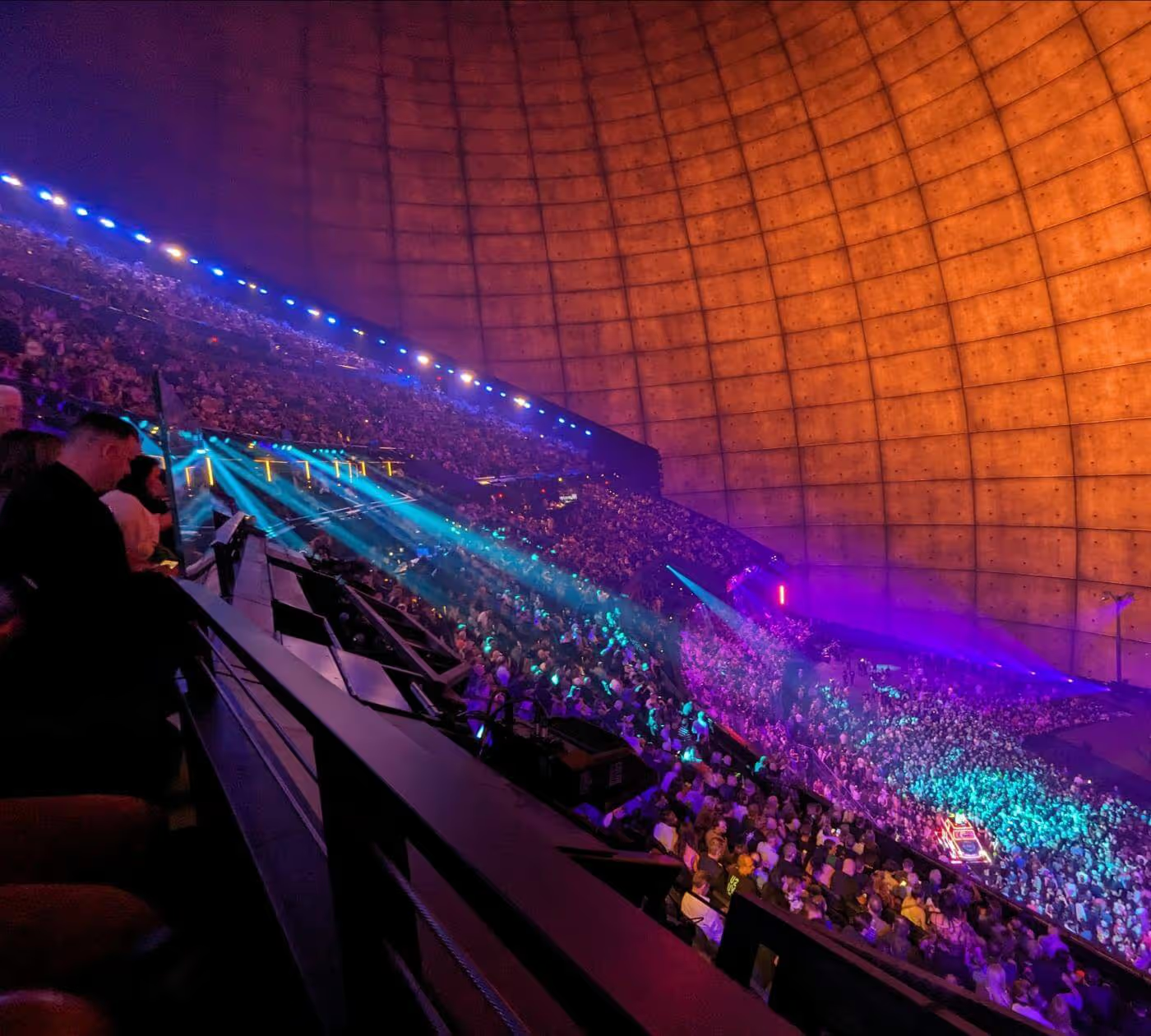
Such an ambitious brief came with its own unique challenges, the combination of which being only addressable with HOLOPLOT technology.
Room acoustics
Spherical shapes are one of the most challenging acoustical environments. Reflections and echoes caused by the dome shaped interior have to be controlled to ensure intelligibility and uncompromised audio quality.
Unprecedented scale
~18.000 seats spread over three tiers and a total distance of 110m (~361 ft) from the main PA make it an extreme challenge to provide consistent coverage from front to back, with no delay lines allowed.
LED integration
The XL, curved LED screen in front of the speaker arrays creates a physical obstacle for sound to pass through which had to be compensated for.
X1’s optimized coverage beams improve the performance and accuracy of sound delivery within a space, providing better audio quality that doesn’t diminish over large distances.
An optimized coverage beam not only directs sound where needed but also avoids unwanted surfaces, improving acoustic performance and ensuring enhanced level and spectral homogeneity over the audience area.
Its air absorption compensation feature is specifically designed for long-throw applications where high-frequency sound propagation is affected by air absorption.
Sophisticated software algorithms consider direction and distance of every beam, enabling users to achieve a balance between spectral uniformity and maximum obtainable sound pressure level - even over large distances.
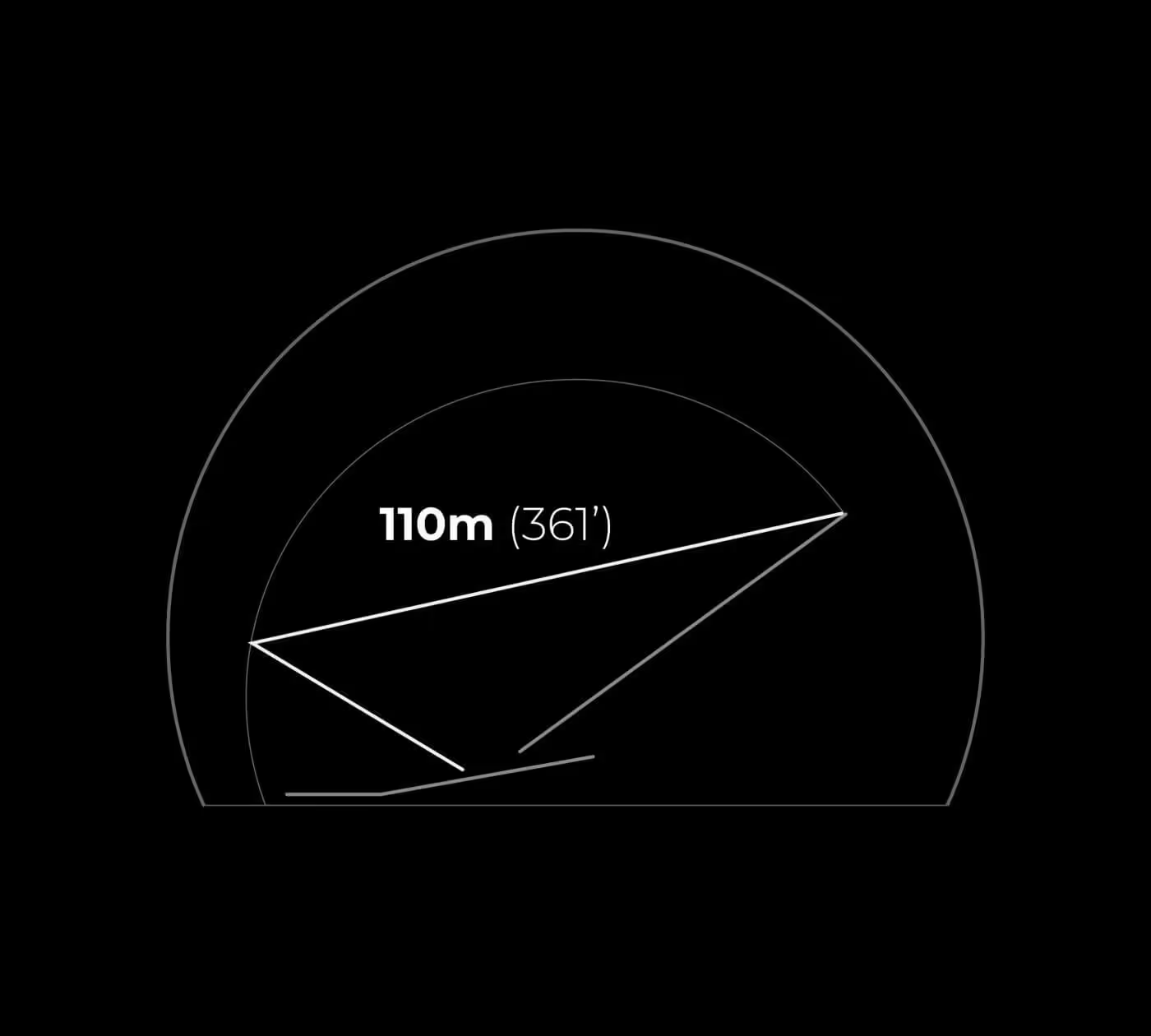
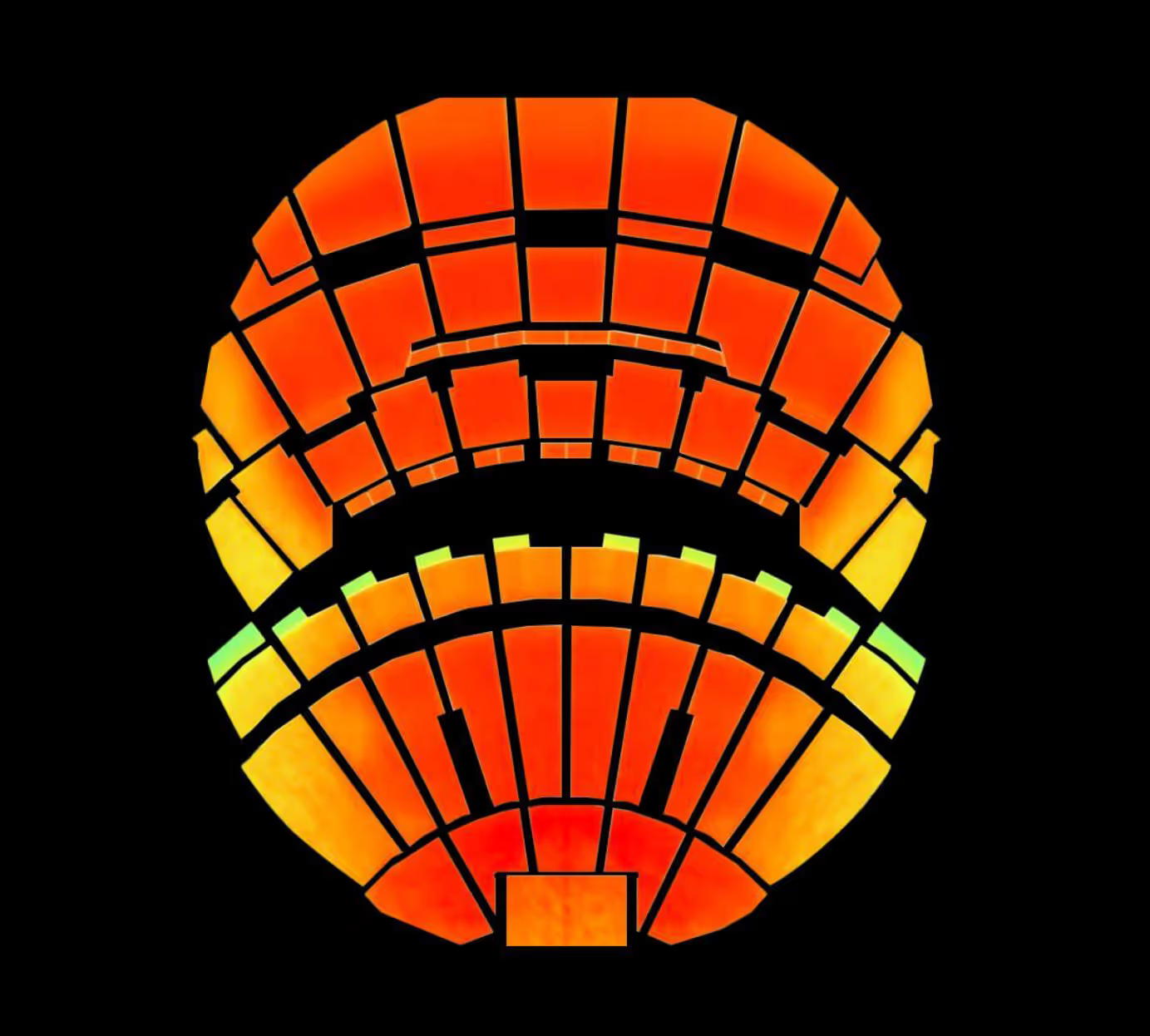
Inside a spherical structure, sound waves are naturally reflected towards the center, affecting the distribution and quality of audio.
Conventional loudspeaker solutions like line array cannot prevent sound energy hitting reflective surfaces such as the highly reflective LED media plane at Sphere. This results in poor sound quality and distracting echos.
Target and avoidance zones
To optimize intelligibility, the HOLOPLOT system allows the user to designate all areas not regarded as listening areas, or areas that could cause reflections, as avoidance zones within the HOLOPLOT system design software.
HOLOPLOT technology enables the precise steering of sound on both the vertical and horizontal axes, allowing it to be contained within defined zones. This way, undesired energy spill onto any room boundary is prevented, therefore significantly improving speech intelligibility and audio quality.

When a visual content almost fully surrounds the viewer, the entire plane cannot be processed by human vision. You have to move your head to truly capture all details of the content. Sound plays an important role in directing the gaze to specific moments and underlining certain points in the visual content.
To create immersive soundscapes and effects it’s paramount to first ensure the main audio coverage is high in quality, solid in its functionality and reliable. The HOLOPLOT X1 system does the basics better, which allows for any creative effects or localized audio to be more effective and impactful.
The system at Sphere is divided into layers which deliver not only an incredibly wide stereo image thanks to the Matrix Array technology of uncoupling sound from its source, it also offers an unprecedented immersive toolkit for sound designers and mixing engineers alike.
One product, one unique system design.
The entire X1 system inside Sphere is hidden by the supersized, curved LED screen. Despite its transparent nature, the screen still creates an obstacle for each driver signal to pass through, causing a loss of audio quality.
HOLOPLOT has developed proprietary compensation algorithms to retain the characteristic clarity of sound of X1 by compensating for the angle-dependent and frequency-dependent transmission loss created by the LED screen. The effects can be described similarly to those of a directional-dependent, spatial EQ.
Curved screen, straight arrays
The straight position of the X1 arrays keeps all sound sources (drivers) at a constant distance and angle relative to the screen. As a result, the transmission loss in a certain direction is the same for all drivers, allowing a uniform compensation across the array.
The effects of the transmission losses are then addressed in the 3D Audio-Beamforming capability unique to HOLOPLOT Matrix Array technology.
Result: Clear audio with virtually no colouration.
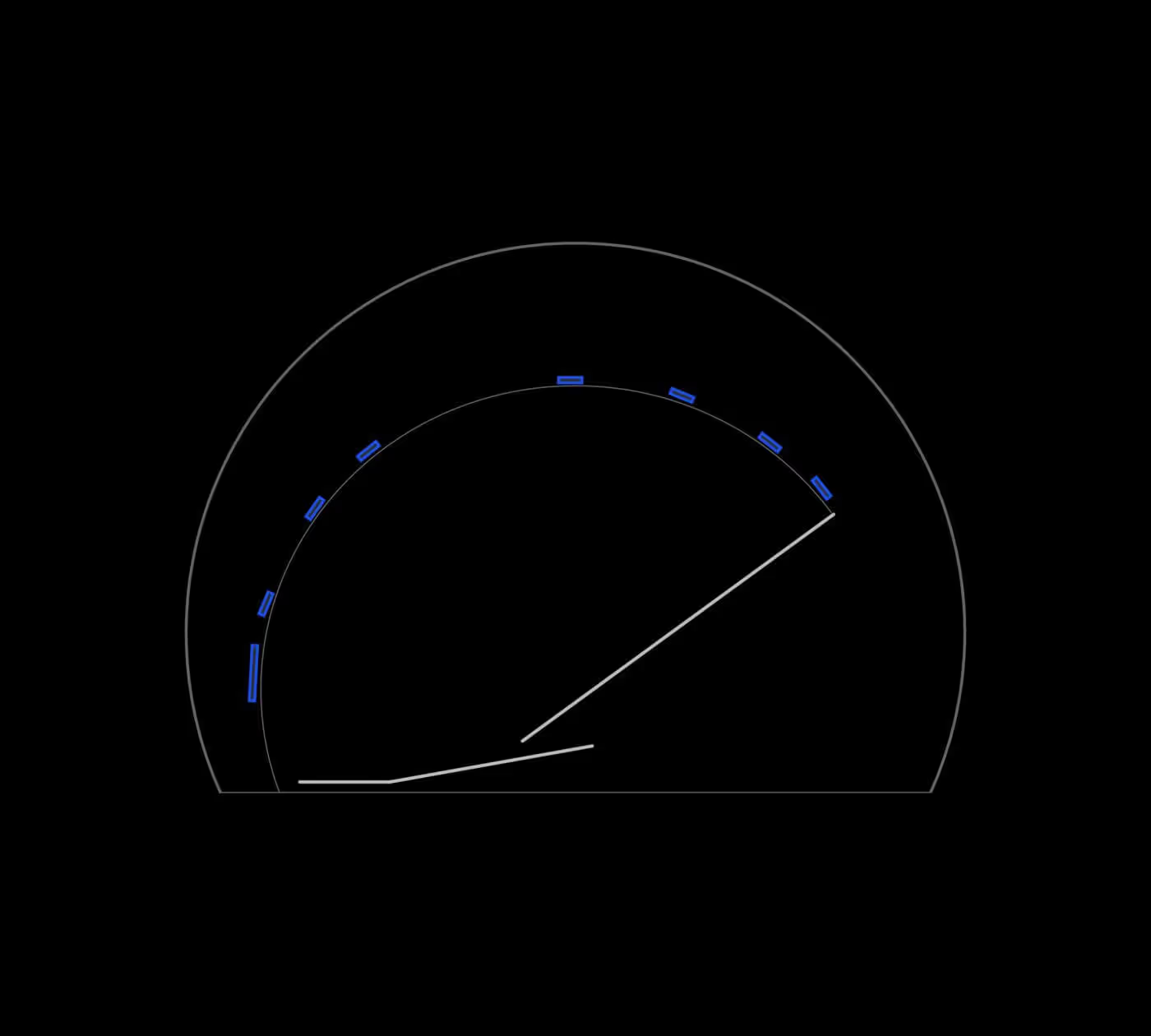
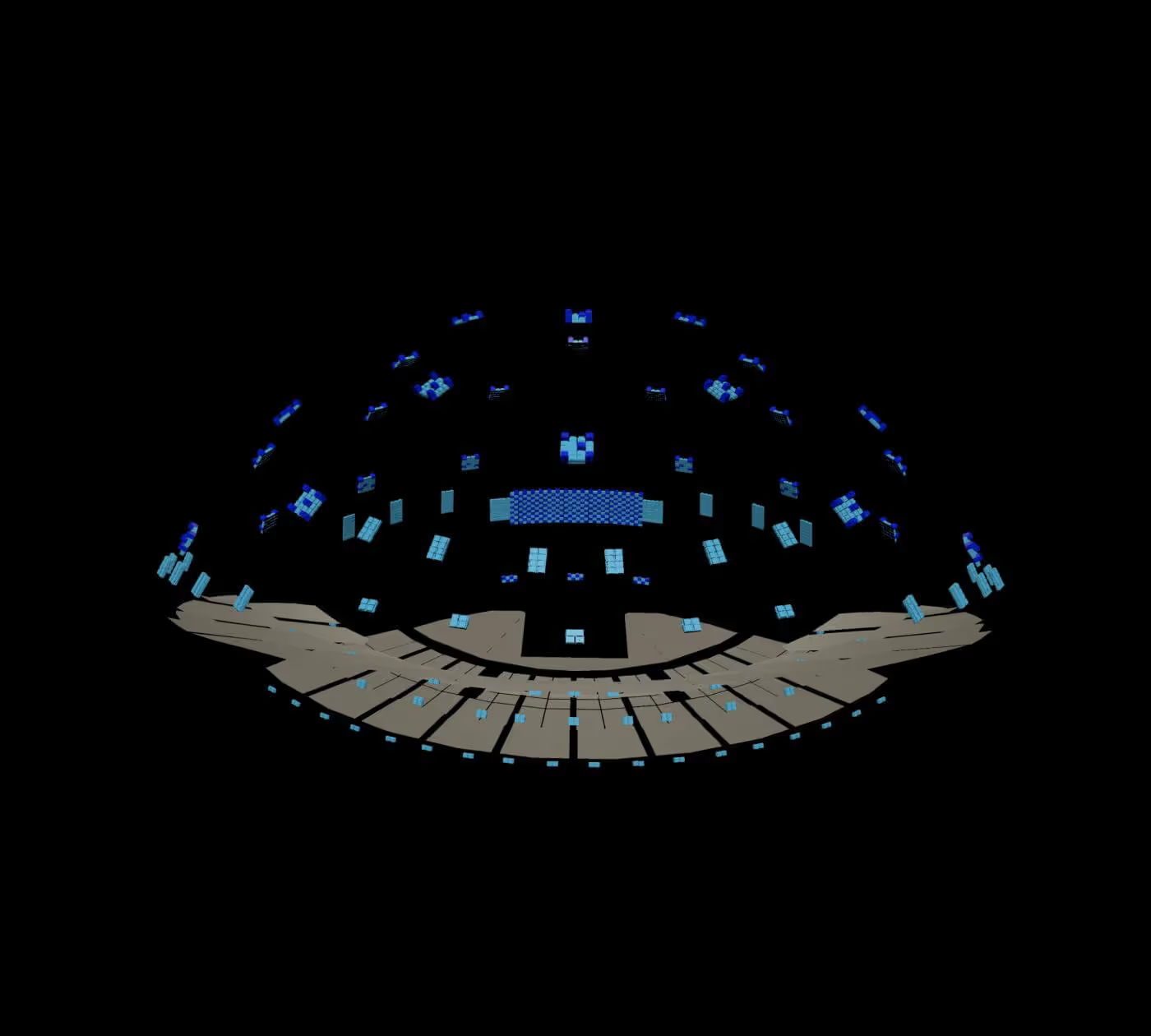
Sphere’s HOLOPLOT system consists of approximately 1,600 permanently installed X1 Matrix Array modules, configured in multiple arrays for different purposes. Let’s break them down:
1x Proscenium Array - 272x MD96 & 192x MD80-S
33.6 Meters wide, 6.6 meters high it’s the largest single array in the world and responsible for the main coverage of the audience area.
28x Environmental Arrays - 5x MD96 and 5x MD80-S each
distributed across the LED screen to create immersive coverage.
6x Effects (FX) Arrays -24x MD96 each
extend the audio imaging of the proscenium array.
71x Surround Arrays
situated behind individual audience sections
12x Under-Balcony Delays
provide coverage for the audience underneath the main balcony
10x Side-Fill Arrays & 6x Low Fill Arrays Array
extend the coverage for audience on the edges and close to the stage
With 464 modules, a surface area of over 200m2, the Proscenium Array is not only the largest array in the system design, it’s also the largest in the world. Together with the FX Array Extension it’s responsible for the powerful, crystal-clear and even coverage of the entire audience area.
The size of the array is predominantly driven by the desire for high resolution localisation across the main portion of the media plane.
The array follows the curvature of the LED screen and despite pointing down allows for consistent audio to reach even the last row of seats at 110m distance, and no need for delay lines.
Optimized beams are aware of their relative position to the audience and digitally place the energy where it’s desired, thanks to the digital sound control via 3D Audio-Beamforming in all three dimensions.
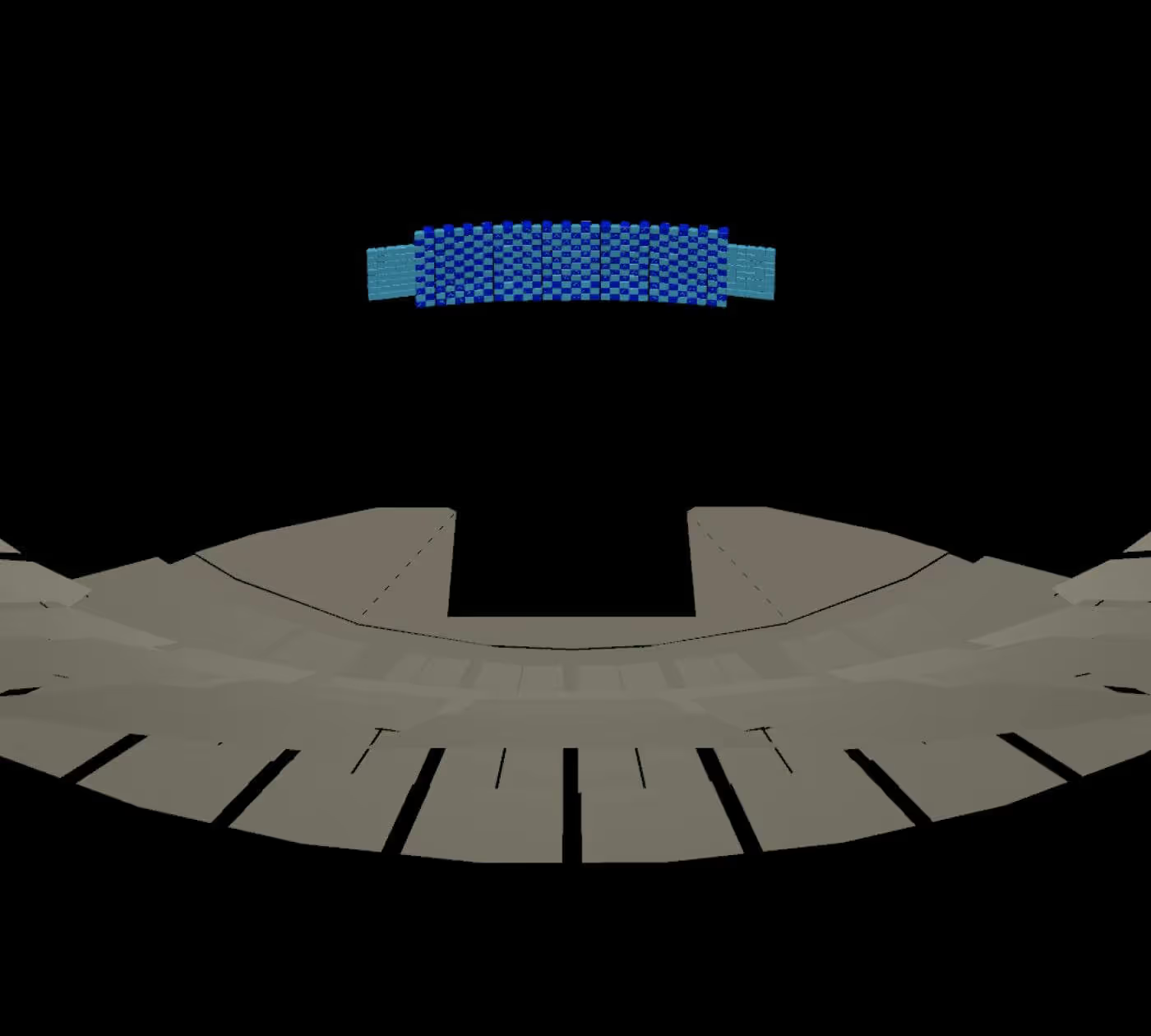
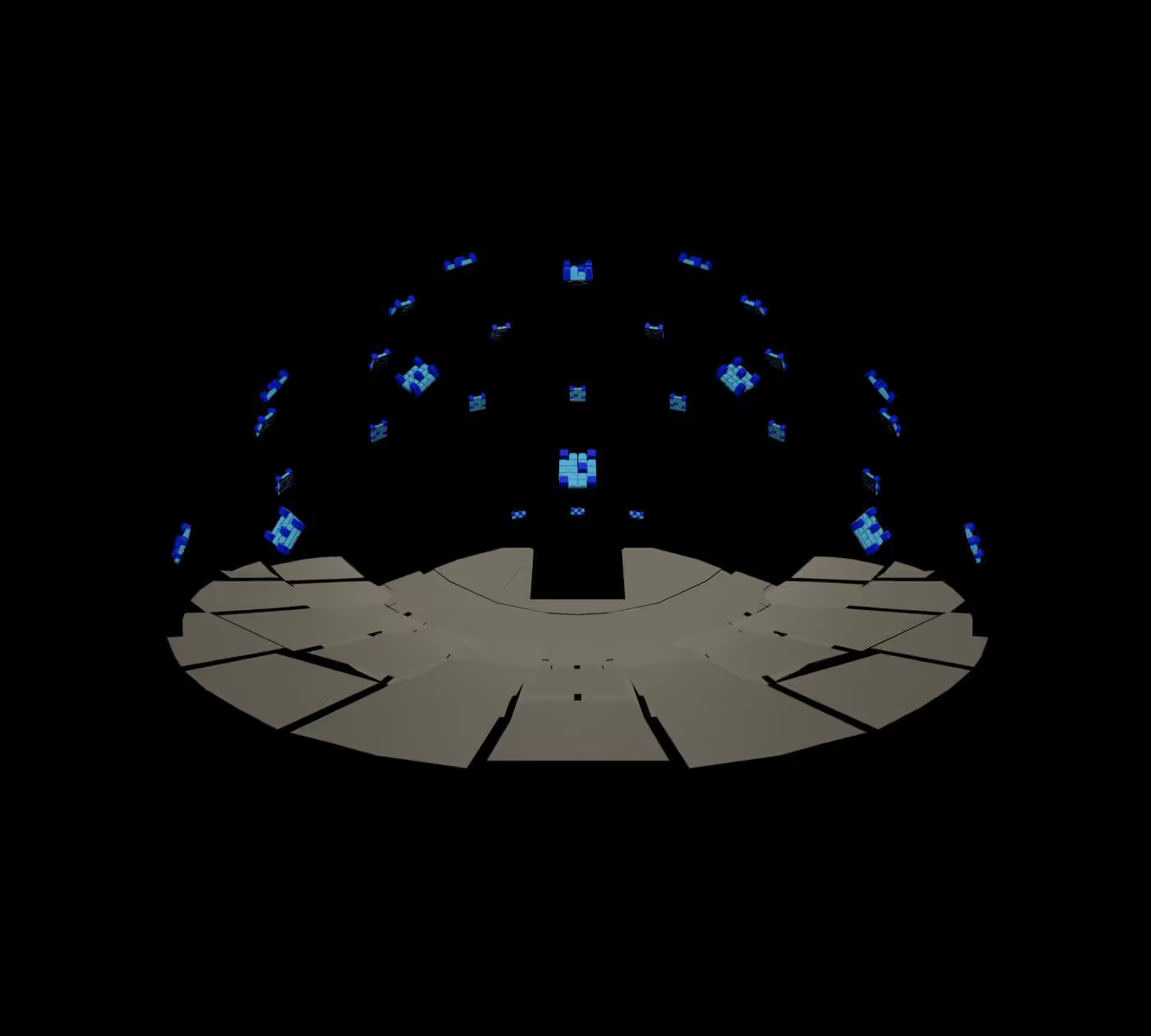
The entire environmental layer consist of 28 Environmental Arrays, in combination with Surrounds and Fills. Together, these offer a creative palette to create fully immersive sound designs. Each array is powerful enough to cover the whole venue and thereby offers accurate localisation across the entire audience.
The number of arrays enables a very high spatial resolution across the whole audience areas and offers a plethora of creative options for artists and sound designers.
The distribution of the Environmental layer arrays combines with the 3D Audio-Beamforming capability of each individual module, providing consistent coverage and audio localization for the entire audience.
